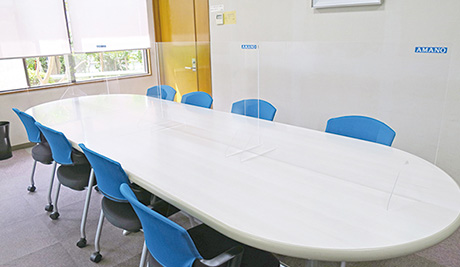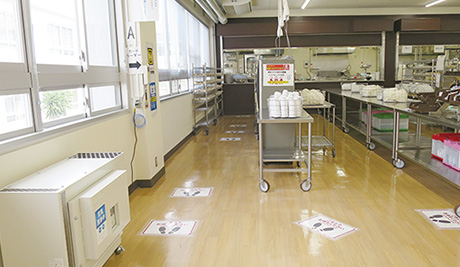Occupational Safety and Labor Hygiene / Disaster Prevention Measures
Occupational Safety and Labor Hygiene
To ensure that all employees feel safe, secure, and comfortable at work, we educate them on
the basics of safety and labor hygiene when they join the company, and raise awareness about
occupational safety and labor hygiene for everyone.
We regularly measure the working environment (noise, dust, organic solvents, heat stroke index)
according to the characteristics of each site, and strive to maintain the comfort of the work
environment. As a safety and health awareness campaign, we ask employees to come up with
safety slogans and apply to Labor Standards Associations, during “National Safety Week” and
“National Occupational Health Week”. We also provide occupational health training by industrial
physicians and ask police chiefs for lectures on safety.
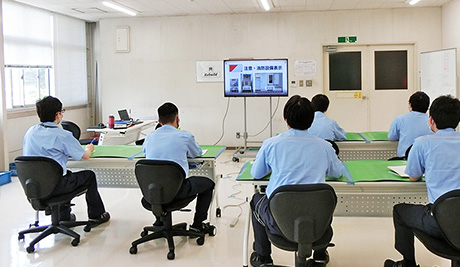
Safety training
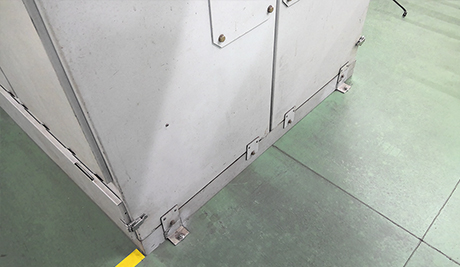
Tip-over prevention measures
Safety and Disaster Prevention Initiatives
Each site has established action guidelines to cope with disasters. The guidelines assumes various situations such as spillage of hazardous substances due to an earthquake and /or factory fires, etc., and regularly conducts emergency response drills along with employee training sessions.
- Action guidelines for responding to earthquakes
In order to prepare for major earthquakes, we have established “Action Guidelines for Responding to Earthquakes” for all employees to ensure that basic policy and action standards in the event of disasters are fully understood and observed. Each site has prepared them own “Disaster Prevention Manual” which gives more specific and detailed instructions on how to act during emergencies. - Employee safety confirmation system
In order to prepare as part of our Business Continuity Plan (BCP), for emergencies we have introduced an “Employee Safety Confirmation System” that can promptly and accurately confirm the safety of all employees including those of domestic group companies. We regularly conduct operational training. - Initial response checklist
We have prepared and operated an “Initial Response Checklist” to promptly secure the safety of visitors, employees, and company equipment.
Activities to Prevent Workrelated Accidents
We conduct safety education (foreman education, low-voltage electricity, free grinding wheels, asbestos work, and full harnesses) as required by laws and regulations by in-house lecturers, and safety experience workshops to improve risk awareness. In addition, employees and cooperative companies jointly hold safety events and disaster prevention councils on a regular basis, and carry out activities to prevent workrelared accidents.
Emergency Drills
In anticipation of fires caused by earthquakes, the Sagamihara Factory conducts fire drills in which
all employees participate in calling 119, evacuation training, and firefighting training under the super
vision of the fire department in accordance with infection prevention measures. Furthermore,
we also conduct environmental protection drills for workplaces that handle hazardous and toxic
substances, based on the assumption that a leakage of such substances may occur.
The Hosoe Factory conducts disaster prevention training on the assumption of tsunamis and fires.
Based on the division of roles in the event of a disaster, such as fire extinguishing teams, rescue
teams, information liaison teams, and evacuation guidance teams, we conduct evacuation drills and
fire extinguishing drills, to reconfirm evacuation routes and fire extinguishing equipment. In
addition, to training at the entire site, we also identified risks at each workplace and conducted
simulated training on a workplace basis, assuming the occurrence of fire in dust collectors and
other equipment , as well as leakage from equipment in the event of an earthquake. We are
working on disaster preparedness, actions, and countermeasures by conducting training based
on the developed response procedures, and by checking and revising the content of the drills.
The head office conducts fire drills assuming an earthquake. We divided into groups and
conducted training in calling 119, extinguishing fires and handling AEDs.
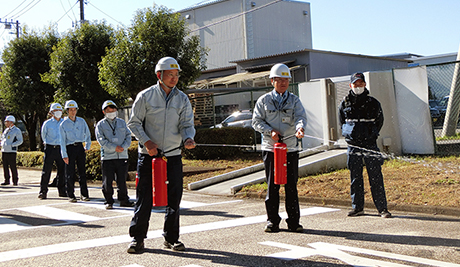
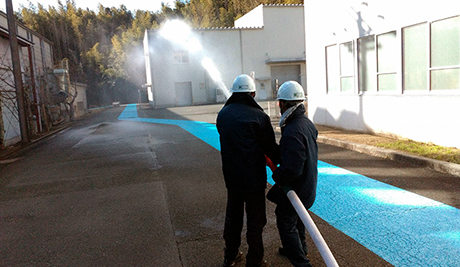
Emergency Drills
Distribution of Disaster Prevention Helmets
In order to ensure safety in the event of disasters, we distribute disaster helmets at our head office and factories. The helmets are a fold-up type and are easy to wear. In order to be able to wear it quickly in the event of an earthquake or fire, etc., each employee keeps their own helmet, for example by hanging it on a hook next to their desk. Similar helmets are always provided in the reception rooms used by visitors. In this way, we are highly conscious of disaster prevention and are prepared for emergencies.
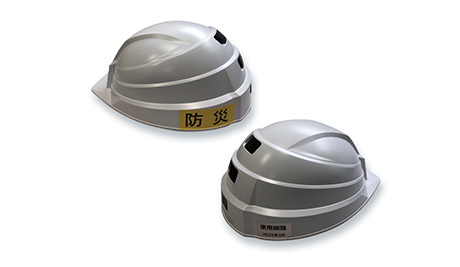
Introduction of mini Convenience Store (snack sales service)
In the Amano Galaxy Building adjacent to the head office, we have introduced a service that allows employees to purchase snacks and light meals. Payments can be settled using the beverage vending machine. Even during lunch or on rainy days, employees can use this service when they want to buy something without going to nearby shops or convenience stores, which leads to better rest time for employees.
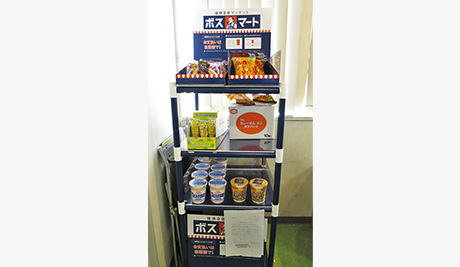
Installation and hands-on Training of AEDs (Automated External Defibrillators)
We have deployed AEDs (Automated External Def ibrillators) at all of our of f ices and branches to prepare for emergencies involving visitors, local residents, or employees. In order to ensure that AEDs can be used quickly and appropriately, we conduct AED operation training at our branches during “National Safety Week”, and we also hold regular sessions at the head office.
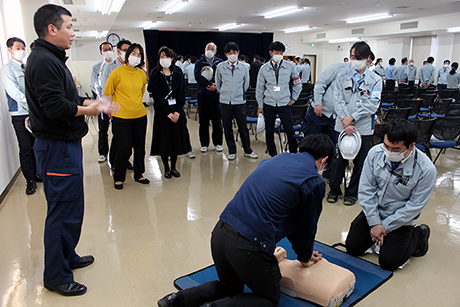
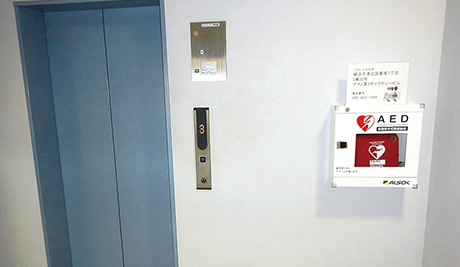
Infectious Disease Measures
We give top priority to the safety and health of our employees. We strive to prevent
infection. We encourage telework and promote the use of web conferencing. At each site, noncontact
thermometers and items necessary for disinfection are at the ready.
We divide up the times the cafeteria can be used and try to avoid crowding. We apply
antibacterial coatings to each table, chair, and tea dispenser. We have installed our own
"Amatsukaze" industrial air purifiers to not only clean the air in wide spaces but also
trap and suppress viruses, to provide a space where people can enjoy meals with peace of mind.
